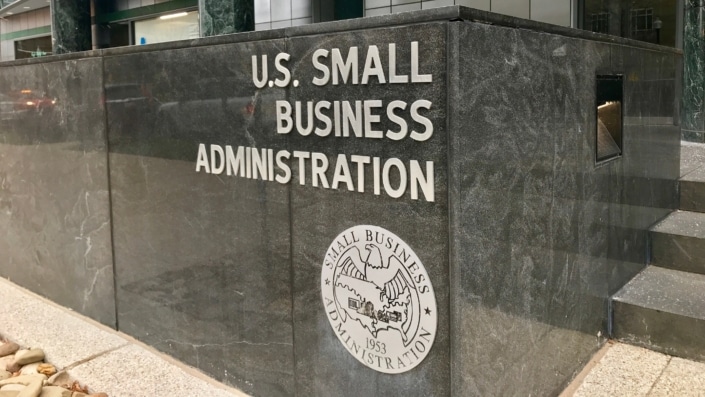How to Survive Negative Cash Flow
No matter how successful your small business is, you’re going to have periods in which sales may be down, customers may be slow to pay or orders aren’t getting fulfilled due to inventory problems, resulting in your monthly expenses being greater than your monthly revenue. These are just some of the scenarios that may lead to a negative cash flow.
If you are experiencing negative cash flow, how long can your business survive? Unfortunately, there isn’t a one-size-fits-all answer to this, because a negative cash flow may be the result of several factors.
Why are you in the Red?
The first question you need to answer is why exactly your business is in the red. Once you’ve identified the reason, you can consider different solutions to help you get back to being cash flow positive.
Some of the reasons your small business may be in the red include:
- You’re waiting for invoices to be paid – You may have a strong accounts receivable portfolio, but that won’t do you much good until customers settle the bills that they owe you.
- You have too much inventory – You may have over-anticipated demand for certain products and as a result, bought more inventory than you can afford.
- Sales are slow – Your gross revenue may not be where you want it to be, perhaps due to supply shortages and the continued rippling effects of the COVID-19 pandemic.
- You’re waiting to launch a new product – You may have invested heavily in the research and marketing for a new product or service that you haven’t begun to sell yet.
- Your overhead/operating expenses are too high – Your overhead/operating expenses include payroll, rent and utility payments, internet access bills, etc. There may be areas in your overhead for which you are paying too much and need to reexamine.
- You’re carrying too much debt – Financing is crucial to the growth of many small businesses and there are many lending options out there, but those regular installment payments of that debt may have gotten the best of you
Figure Out a Timeline
When your business is in the red, it’s going to be a stressful and time-sensitive situation. First, how long can you afford to stay there?
You can figure this out by using a very simple equation – take the amount you have in cash reserves and credit, and divide that by how much money you are losing every month. For example, if you owe $6,000 every month and you have a total of $60,000 in reserves, credit and borrowings from friends or family, then you can afford to operate for 10 more months.
If you have a bright spot on the horizon, such as a due date for a big invoice or the launch of a new product, then you may have multiple solutions available to you. Additionally, if you’re in the red because sales are slow, then you would have 10 months to figure out how to make your business profitable again by adjusting your prices or figuring out ways to cut overhead.
Re-examine Your Products/Prices
If you’re struggling with a negative cash flow because of weak sales, then you may have to take a hard look at the prices of your products or services It could be that your sales margin – the price of your product minus the cost of producing your product – may be too low, thus indicating a need to adjust the price of your product.
Perhaps you need to come up with a plan to reinvent your business. Think about the way you’re promoting your product or service and whether you are reaching the right market. For example, an expensive, gourmet restaurant probably won’t succeed in a middle- or low-income neighborhood no matter how good the food is. Does your product or service represent the same mismatch with the market you’re trying to sell to?
Perhaps you’re not sufficiently engaging your market with tools such as digital advertising or email marketing. It also could be that you aren’t advertising your products or services as well as you should be, be it on social media, through your website or otherwise on the internet. Are you targeting the correct market with the right product? If not, you may consider changing your products or services or marketing approach.
Reduce Overhead
Just like you need to be careful not to live above your means when it comes to your personal finances, you need to make sure your business expenses are not more than you can afford. Closely examine what you are spending money on every month and eliminate non-vital expenses.
For example, you may want to switch to another office if your rent is too high, or you may have to perform the unpleasant task of furloughing or letting go of employees to reduce costs. Hiring freelancers instead of full-time employees and cutting down on the amount of office supplies will also reduce operating costs.
Work With Creditors
If your business is carrying too much debt and the monthly payments are causing your business to experience a negative cash flow, then you should work with your creditors to reduce monthly payments.
If you are using outside vendors for services such as marketing, public relations or accounting services, you may want to put your relationships with them on hold for the time being.
Borrowing may be an Option
If your cash flow is negative because you need to pay your vendors or if customers are slow to pay their invoices, certain forms of business financing such as purchase order financing or invoice factoring may help you get to the end of that timeline. Both forms of financing may put the funds in your hands, not add to your liabilities and keep you from going under.
If your company has a history of strong revenue streams but is currently experiencing a negative cash flow because you’ve poured money into the research, development and marketing of a new product and you are waiting for the product to be launched, then revenue-based financing may be an option you want to consider.
Don’t Declare Bankruptcy Just Yet
Bankruptcy is a painful and legally complex solution that you should generally try to avoid. If you find yourself with a negative cash flow, don’t panic just yet, because it probably isn’t going to last forever. Closely examine the reasons your business is in the red and come up with solutions on how to fix them.
Be cost-efficient with your overhead expenses, rethink your products and prices and determine if there are financing solutions for you. Doing so can give your business a consistently strong cash flow moving forward and put it in a position to be more successful in the future.




